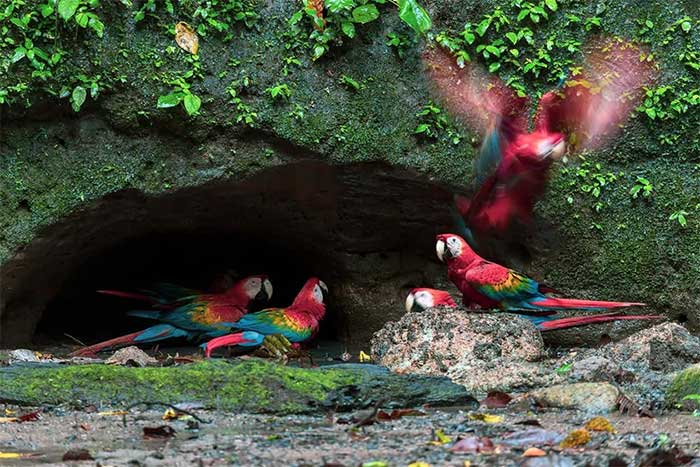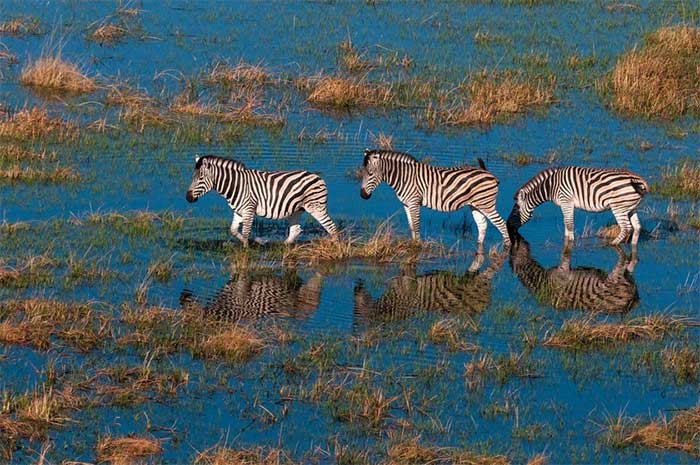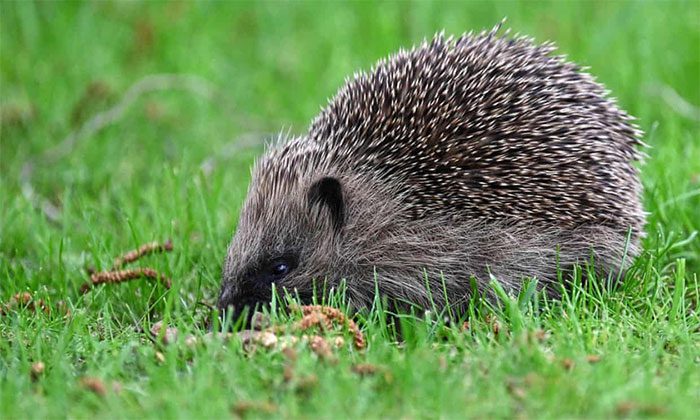Artificial Intelligence (AI) is being widely utilized to monitor biodiversity and enhance efforts to assist endangered species.
The Potential of Artificial Intelligence in Animal Conservation
Unlike traditional methods that can disrupt ecosystems or require significant time, effort, and resources, AI has the ability to analyze vast amounts of data quickly and efficiently in real-time.

AI systems can identify bird species from audio recordings in tropical forests. (Photo: Ulrich Hollmann/Getty).
AI-based solutions provide conservationists around the world with unprecedented tools to help identify, monitor, track, and ultimately protect wildlife.
Wildlabs.net (a technology network for wildlife conservation) recently reported that AI is one of the top three emerging technologies in the field of conservation.
The report states: “AI can learn to identify images of rare species among thousands of results or accurately recognize animal calls after hours of field recordings, significantly reducing manual labor required for conservation data collection.”
AI is currently demonstrating its capabilities in protecting many endangered species such as humpback whales, snow leopards, and koalas. It also supports scientists, researchers, and park rangers in crucial tasks: from anti-poaching efforts to species monitoring. With machine learning systems that utilize algorithms and models to learn, understand, and adapt, AI can perform the work of hundreds of people, achieving results faster, more cost-effectively, and more efficiently.
The use of AI technology in animal conservation can also raise community awareness about the status of wildlife and the necessity of protecting them.
AI Drives Significant Discoveries in Biodiversity
Mr. Carl Chalmers, a machine learning researcher at the nonprofit organization Conservation AI (based in Liverpool, UK) that utilizes AI technology for various ecological projects, stated: “Without AI, we would never achieve the United Nations’ goals for protecting endangered species.”
Species are disappearing at rates hundreds to thousands of times faster than millions of years ago. According to statistics, approximately 1 million species are on the brink of extinction. In 2020, the United Nations set a goal to protect at least 30% of the earth’s land and oceans by the end of this decade.
Mr. Nicolas Miailhe, founder of The Future Society – an international nonprofit aimed at better managing AI, based in Paris – remarked that AI is “not perfect” but can drive significant discoveries.

AI tools can analyze video footage and still images to identify and track wildlife activities. (Photo: AGAMI/Alamy).
Ecologist Jörg Müller at the University of Würzburg, Germany, and colleagues have shown that AI tools can help quantify biodiversity in tropical forests by identifying animal species from audio recordings.
In a study published in the journal Nature Communications, researchers used AI to analyze animal sounds in Chocó – a region in Ecuador known for its rich species diversity.
They set up recording devices at 43 sites representing various stages of natural recovery: undisturbed forests, areas that were logged but then abandoned and began to regenerate, and areas where forests were cleared to become cocoa plantations and grasslands. They provided their audio files to experts and identified 183 bird species, 41 amphibian species, and 3 mammal species.
The researchers also provided their recordings to a type of AI model called convolutional neural networks (CNN), which was developed to identify bird sounds. Ecologist Müller stated that AI is ready to identify animal species in tropical regions more comprehensively based solely on sound. All that is needed is more training data collected by humans.
Researchers at Conservation AI have developed models that can scan video footage and images from drones or camera traps to identify wildlife, including critically endangered species, and track animal movements.
They have built a free online platform using this technology to automatically analyze images, video files, or sounds, including data from real-time camera trap footage and other sensors that approved users can upload. Users have the option to receive email notifications when a species of interest is detected in the footage they uploaded.
So far, the Conservation AI organization has processed over 12.5 million images and detected over 4 million individual animals across 68 species, including the endangered pangolin in Uganda, gorillas in Gabon, and orangutans in Malaysia.
Researcher Paul Fergus stated: “This platform can process tens of thousands of images per hour, whereas humans can only handle a few thousand images at best. The speed of AI data processing can allow conservationists to protect vulnerable species from sudden threats – such as poaching and wildfires – quickly.”
Along with real-time biodiversity monitoring, AI can be used to model the impact of human activities on ecosystems and recreate historical changes. Researchers have utilized AI to explore how a century of environmental degradation in freshwater ecosystems has led to biodiversity loss.
Ms. Luisa Orsini – an evolutionary biology researcher at the University of Birmingham, UK, stated: “Long-term data is crucial for linking changes in biodiversity with environmental changes and identifying achievable conservation goals.”
Ms. Orsini and her colleagues developed a model linking biodiversity with historical environmental changes using AI. The research team obtained genetic material left by plants, animals, and bacteria in the sediments of a lake over the past century. The sediment layers were dated, and environmental DNA was extracted for sequencing.
Subsequently, scientists combined this data with climate information from weather stations and chemical pollution data from direct measurements and national surveys, using AI designed to process different types of information. The goal was to identify correlations amid chaotic data.
According to Ms. Orsini, the main benefit of using AI is that it is hypothesis-free and data-driven. AI learns from past data and predicts future biodiversity trends with high accuracy.
AI Aids in Monitoring Changes in Animal Populations in the Region
In the UK, AI has been used for the first time to help understand the status and causes of declining hedgehog populations.
Images of mammals across the country, from urban parks and private gardens to woodlands and agricultural land, will be captured by cameras and then processed through AI trained to distinguish between wildlife and humans.

AI is used to estimate hedgehog populations in various habitats across the UK. (Photo: Denis Charlet/AFP/Getty Images)
In this way, The National Hedgehog Monitoring Programme (NHMP) in the UK hopes to provide estimates of hedgehog populations in different habitats throughout the UK, thereby observing their changes over the years.
Organizations such as the British Hedgehog Preservation Society (BHPS) state that this will provide important insights into the factors causing the decline in hedgehog numbers and enable conservationists to take necessary measures to reverse this situation.
Dr. Henrietta Pringle – coordinator of the NHMP at PTES shared that previously, researching and monitoring hedgehogs was challenging and limited, but now, thanks to AI tools, it has become easier. This is extremely beneficial for the long-term conservation of hedgehogs.


















































